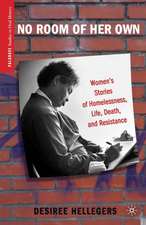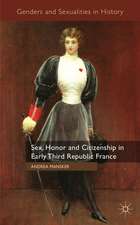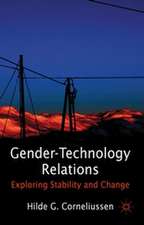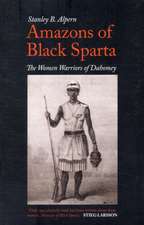Breaking the Ties That Bind: Popular Stories of the New Woman
Editat de Maureen Honeyen Limba Engleză Paperback – 14 noi 1992
Preț: 178.34 lei
Nou
Puncte Express: 268
Preț estimativ în valută:
34.12€ • 35.63$ • 28.18£
34.12€ • 35.63$ • 28.18£
Carte tipărită la comandă
Livrare economică 15-29 aprilie
Preluare comenzi: 021 569.72.76
Specificații
ISBN-13: 9780806130347
ISBN-10: 0806130342
Pagini: 256
Dimensiuni: 132 x 210 x 21 mm
Greutate: 0.39 kg
Editura: University of Oklahoma Press
Seria Popular Stories of the New Woman
ISBN-10: 0806130342
Pagini: 256
Dimensiuni: 132 x 210 x 21 mm
Greutate: 0.39 kg
Editura: University of Oklahoma Press
Seria Popular Stories of the New Woman
Textul de pe ultima copertă
The New Woman - an independent, nontraditional, usually career-minded woman for whom marriage and family were secondary - became a popular heroine in women's magazine fiction from the time of World War I through the 1920s. During this period, American culture entertained a new, feminist vision of gender roles that seriously challenged the Victorian conception of separate spheres and helped pave the way for modern images of women in public activity. The extent to which popular culture contributed to this new concept of women's autonomy has not previously been recognized, but there can be no doubt that these stories helped define a pivotal historical moment. They are striking in their egalitarian portrayal of heroines on the cutting edge of modernism. The stories in this collection are drawn from the biggest periodicals of the day - Ladies' Home Journal, Cosmopolitan, Good Housekeeping, Woman's Home Companion, and McCall's - as well as the African-American magazine The Crisis. Each story presents a different expression of the New Woman: Susanne Brown, a journalist; Doria Dean Yale, a state politician; Amy Brooks, a surgeon; Eve Archer, a cafeteria worker; Mrs. Marian Burleigh, a wealthy widow who wants a job outside the home; Vandy Cameron, a pilot. Nine illustrations that accompanied the original publication of the stories depict the New Woman as she was envisioned in her day. The featured writers include Jessie Fauset, Zona Gale, Edith Barnard Delano, and Booth Tarkington. These stories are among our earliest American feminist writings, yet they remain relevant, compelling, even inspiring for readers today. Each story is rooted in some dimension of contemporary feminism and explorestopics of continuing importance: solidarity among women, the lives of women of color and working-class women, sexual harassment, lesbian love, family and marital bonds, women's relation to paid employment. Female self-discovery, independence, and achievement are affirmed throughout. With images of female empowerment and autonomy rare even now, modern readers will find in these New Woman stories not only a significant page of women's history but also an enduring heroine.















